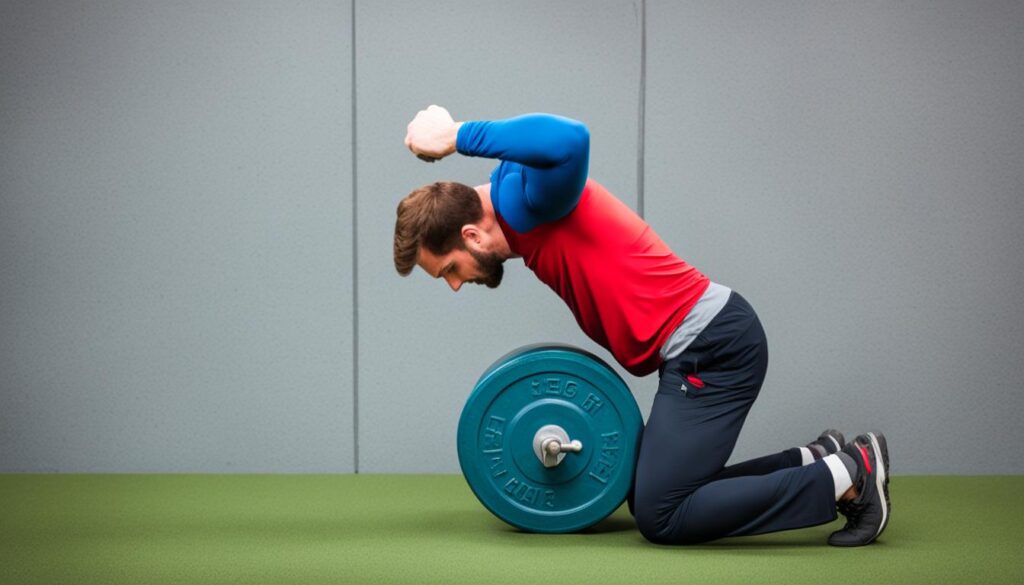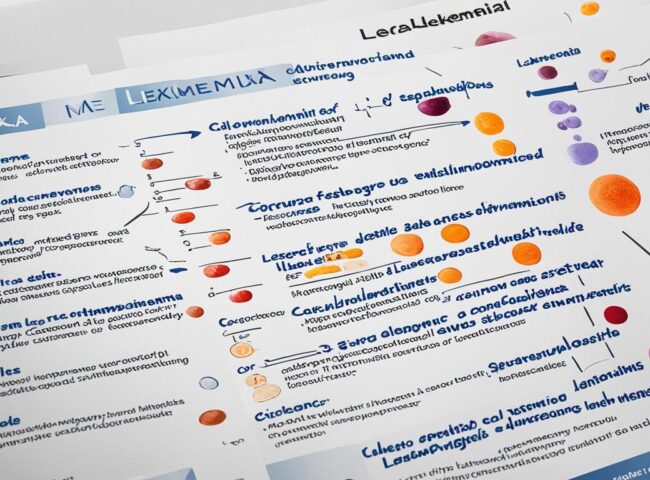If you’re dealing with sciatica, you’re not alone. This condition affects millions globally, causing pain in the lower back and numbness in the legs. But, there’s hope. With the right exercises and lifestyle changes, you can ease your sciatica pain and regain control over your life.
This guide will show you the best ways to manage sciatica and boost your health. You’ll learn about the causes of sciatica and why stretching and moving are key. With this knowledge, you can tackle your pain at its source and find lasting relief.
Key Takeaways
- Understand the causes and symptoms of sciatica to better manage your condition
- Discover the importance of stretching and mobility exercises for sciatica relief
- Learn about targeted exercises, such as piriformis stretches and McKenzie exercises, to address specific sciatica triggers
- Explore the benefits of lower back strengthening and core stabilization exercises for spinal support
- Utilize hot and cold therapy techniques to manage pain and inflammation
Understanding Sciatica: Causes and Symptoms
Sciatica is a condition that affects millions globally. It brings sharp, shooting pain from the lower back down to the buttocks and legs. Knowing the common causes and symptoms is key to finding relief and effective lower back pain treatment.
Recognizing the Signs of Sciatic Nerve Compression
The sciatic nerve is the biggest nerve in our body. When it gets compressed or irritated, it causes discomfort. Common signs of sciatic nerve compression are:
- Sharp, burning, or electric-like pain in the lower back, buttocks, and/or legs
- Numbness, tingling, or weakness in the affected leg
- Difficulty sitting or standing for long periods
- Increased pain when coughing, sneezing, or doing physical activity
The severity and location of symptoms depend on the cause of the nerve pain relief. Spotting these signs early helps guide treatment and prevents the condition from getting worse.
Common causes of sciatica include herniated or bulging discs, spinal stenosis, and piriformis syndrome. In some cases, chronic pain management is needed to tackle the root cause and bring lasting relief.

“Sciatica can be a debilitating condition, but with the right treatment and lifestyle changes, it’s possible to find lasting relief and improve overall quality of life.”
Importance of Stretching and Mobility Exercises
Keeping your flexibility and range of motion is key to handling sciatica and easing the pain it brings. Adding herniated disc exercises, piriformis syndrome stretches, and spinal stenosis relief to your daily routine helps a lot. These exercises can lessen symptoms and boost your spinal health.
Stretching and mobility exercises aim to fix muscle imbalances and tightness that can cause sciatic nerve compression. By making the hip, pelvic, and lower back muscles more flexible, you ease pressure on the nerve. This helps reduce pain and discomfort.
Benefits of Stretching and Mobility Exercises for Sciatica
- Increased range of motion and joint flexibility
- Reduced muscle tension and spasms
- Improved blood circulation and nutrient delivery to the affected areas
- Enhanced nerve function and reduced nerve irritation
- Faster recovery and reduced risk of future flare-ups
Spending just a few minutes each day on these exercises can help you manage your sciatica. It’s a step towards getting your active life back. Always listen to your body and don’t overdo it, as that can make things worse.

“Stretching and mobility exercises are essential for anyone dealing with sciatica. They help alleviate the pressure on the sciatic nerve and promote overall spinal health.”
Using stretching, mobility exercises, and targeted strengthening together is a strong way to fight sciatica. By focusing on your flexibility and range of motion, you’re taking a big step towards lasting relief and a better life.
Targeted Exercises for Sciatica Relief
Dealing with sciatic nerve pain means using a variety of methods. Targeted exercises are key in helping to ease the pain. By focusing on certain movements and stretches, we can tackle the root causes of sciatica and aid healing.
Piriformis Stretches for Piriformis Syndrome
Piriformis syndrome is a common cause of sciatica. It happens when the piriformis muscle in the buttocks presses on the sciatic nerve. Gentle stretches for the piriformis can ease this tension and lessen sciatic nerve pain. Try the seated piriformis stretch or the lying piriformis stretch to stretch the muscle and find relief from sciatica.
McKenzie Exercises for Herniated Discs
If sciatica is caused by a herniated disc, McKenzie exercises can help. These exercises, created by Robin McKenzie, aim to pull and extend the spine. This reduces disc bulging and takes pressure off the sciatic nerve. Adding McKenzie exercises to your routine can be a strong way to treat sciatica without surgery.
Always talk to a healthcare professional before starting any new exercise plan, especially if you have ongoing or severe sciatic nerve pain. They can give you tailored advice and make sure you’re doing the exercises right. This ensures you get the most benefit and stay safe.

Lower Back Strengthening Exercises
Having a strong lower back is key to easing sciatica pain and keeping your spine healthy. By doing exercises that focus on the lower back, you help support your spine. This reduces pressure on the sciatic nerve and helps with nerve pain.
Core Stabilization Exercises for Spinal Support
Core exercises are also important for sciatica and back pain. They help strengthen muscles that support the spine. This can ease sciatica symptoms. Here are some core exercises you can try:
- Planks: Hold a plank position, engaging your core muscles to maintain a straight line from your head to your heels. Start with 30-second holds and gradually increase the duration.
- Bird Dogs: Get on all fours and simultaneously extend one arm and the opposite leg, maintaining a neutral spine. Switch sides and repeat.
- Dead Bugs: Lie on your back with your arms extended overhead and your legs raised. Slowly lower one arm and the opposite leg, engaging your core to prevent your lower back from arching.
| Exercise | Description | Benefits |
|---|---|---|
| Superman | Lie on your stomach and simultaneously lift your arms, chest, and legs off the ground, engaging your lower back muscles. | Strengthens the lower back, improving spinal stability and reducing sciatica pain. |
| Glute Bridges | Lie on your back with your knees bent and feet flat on the ground. Lift your hips off the ground, engaging your glutes and lower back. | Targets the glutes and lower back, improving overall core strength and stability. |
| Reverse Hyperextensions | Lie on your stomach with your legs extended and your hips on the edge of a bench or table. Lift your legs up, engaging your lower back muscles. | Strengthens the lower back and helps decompress the spine, providing relief for sciatica pain. |
Start slowly with these exercises and increase the intensity and time as you get stronger. Being consistent is important for building a strong lower back and core. Make these exercises a regular part of your routine to help manage pain.

sciatica relief, sciatica exercises, back pain, nerve pain, pain management
Living with sciatica, back pain, or nerve pain can be tough. But, there are ways to find relief and manage these issues. We’ll look at a full approach to tackle sciatica, back pain, and nerve pain. This will give you the knowledge and tools to improve your life.
Effective Sciatica Relief Techniques
Sciatica is pain that starts in the lower back and goes down the leg. You can ease this pain with exercises and changes in your daily life. Here are some tips from our experts:
- Gentle stretching and mobility exercises to improve flexibility and reduce nerve tension
- Core-strengthening exercises to provide better spinal support and stability
- Ergonomic adjustments to your work environment to minimize strain on the lower back
- Hot and cold therapy to manage inflammation and pain
Sciatica Exercises for Back and Nerve Pain
Doing the right exercises is key to managing sciatica, back pain, and nerve pain. Our guide offers a range of exercises that work, like:
- Piriformis stretches to release tension in the hip muscles
- McKenzie exercises for herniated discs to promote disc healing
- Core stabilization exercises to strengthen the abdominal and lower back muscles
Adding these exercises to your daily routine can bring relief and improve how well you function.
Comprehensive Pain Management Strategies
There’s more to pain management than just exercises. Consider these strategies too:
- Complementary therapies such as acupuncture, massage, and chiropractic care
- Maintaining a healthy weight and active lifestyle to reduce stress on the spine
- Proper body mechanics and lifting techniques to prevent future injury
Handling sciatica, back pain, and nerve pain from different angles can lead to better and lasting relief.

For successful pain management, a tailored approach is best. This means using various techniques and making lifestyle changes. With your healthcare team, you can create a plan that meets your specific needs. This will help you take charge of your health and well-being.
Hot and Cold Therapy for Pain Management
Hot and cold therapy are great for managing sciatica pain. They help reduce inflammation and ease muscle spasms. This can also help with sciatic nerve issues.
Heat, from heating pads or warm baths, relaxes tense muscles and boosts blood flow. This brings oxygen and nutrients to the area, helping it heal faster. Using heat for 15-20 minutes, several times a day, can ease sciatica pain.
Cold therapy, like ice packs, reduces inflammation and dulls sciatica pain. It makes blood vessels smaller, which lessens swelling and nerve pressure. Apply cold for 10-15 minutes, several times a day, but avoid direct skin contact with the cold.
Using both hot and cold therapies helps with nerve pain relief and chronic pain management. Try different methods to find what works best for you. This approach can help with sciatica relief.

“Combining heat and cold therapy can be a game-changer in managing sciatic nerve pain. It’s a simple, drug-free solution that can provide meaningful relief.”
Lifestyle Modifications for Sciatica Prevention
Sciatica can be a tough condition, but you can prevent it with lifestyle changes. By using ergonomic practices, keeping a good posture, and exercising daily, you can help your spine and reduce sciatic nerve pain.
Ergonomic Considerations for Desk Workers
If you work at a desk most of the day, focus on ergonomics. The right desk setup, chair adjustments, and moving often can help ease back pain and stop sciatica. Here are some tips:
- Adjust your chair height so that your thighs are parallel to the ground, and your feet are flat on the floor.
- Ensure your computer monitor is at eye level, reducing the strain on your neck and upper back.
- Take regular breaks to stand, stretch, or take a short walk around the office to promote blood flow and muscle flexibility.
Creating an ergonomic workspace can lower your risk of sciatica and other musculoskeletal problems.
| Ergonomic Principle | Recommendation |
|---|---|
| Chair Height | Adjust so thighs are parallel to the ground and feet are flat on the floor |
| Monitor Positioning | Place at eye level to reduce neck and upper back strain |
| Movement Breaks | Stand, stretch, or take a short walk every hour to improve circulation |

Good posture and regular movement can help prevent sciatica and keep your spine healthy.
Complementary Therapies for Sciatic Pain Relief
Dealing with chronic sciatic nerve pain is tough, but there are many therapies that can help. These go beyond just exercises and pain relief methods. They offer a full way to handle your sciatica.
Acupuncture is a traditional Chinese method that uses thin needles on the body. It helps with chronic pain, including sciatic nerve pain, by boosting the body’s own pain relief.
Massage therapy is great for sciatica too. It works on the muscles and soft tissues around the sciatic nerve. This can reduce inflammation, ease tension, and improve blood flow. All these help with pain relief.
If you like a more active approach, spinal manipulation might be for you. A chiropractor or osteopath does this. It involves gentle spine adjustments. This can ease sciatic nerve pressure and help with spinal alignment.
For chronic pain management and non-surgical sciatica treatment, mixing these therapies with your usual exercise and pain relief plans is key. It makes a complete plan to better your sciatica and life quality.

“Integrating complementary therapies into your sciatica treatment plan can be a game-changer, providing additional avenues for pain relief and improved overall well-being.”
Maintaining Good Posture and Body Mechanics
Proper posture and body mechanics are key to managing sciatica and avoiding injury. They matter whether you’re sitting, standing, or doing daily tasks. Keeping your body aligned can lessen the strain on your lower back and sciatic nerve.
Proper Lifting Techniques to Prevent Injury
Using the right lifting techniques is crucial for sciatica prevention. Always bend at the knees and hips when lifting. Keep your back straight and avoid twisting. This spreads the weight out evenly and lowers the chance of back pain and nerve pain relief.
- Keep your feet shoulder-width apart, with one foot slightly in front of the other for stability.
- Engage your core muscles to support your spine as you lift.
- Lift with your legs, not your back, and keep the object close to your body.
- Avoid sudden or jerky movements, and take breaks if the object is too heavy.
Following these safe lifting tips can help protect your lower back and stop sciatica from getting worse.
| Proper Lifting Technique | Improper Lifting Technique |
|---|---|
|
|
By using these sciatica prevention tips every day, you can lower the risk of back pain and nerve pain relief issues. This lets you stay active and healthy.

When to Seek Medical Attention for Sciatica
Sciatica can often be managed with simple treatments like stretching and exercise. But, there are times when you need to see a doctor for sciatic nerve pain. Knowing when to get professional help is key.
Seeing a doctor is a must if the pain is very bad, doesn’t go away, or gets worse. If you have intense pain in your leg or back that home remedies don’t help, you should get medical help.
- Muscle weakness, numbness, or tingling in the leg or foot
- Difficulty controlling bladder or bowel function
- Unexplained weight loss or loss of appetite
- Fever, chills, or other signs of infection
If you notice any of these symptoms, make an appointment with your doctor. They can check you out, order tests, and create a plan to fix your sciatica relief, back pain treatment, and nerve pain management.
“Seeking medical attention early can help prevent the condition from worsening and improve your overall prognosis.”
Getting help early is crucial for sciatic nerve pain. Your doctor might suggest things like physical therapy, medicines, or spinal injections. Sometimes, surgery is needed to fix deeper problems.
It’s always best to be safe with your health. Don’t wait to see a doctor if you have ongoing or severe sciatic nerve pain. With the right treatment, you can feel better and do your daily activities again.
Chronic Sciatica: Exploring Non-Surgical Treatments
For those dealing with chronic or severe sciatica, non-surgical treatments can offer relief. Epidural steroid injections are one such option that has shown promise. These injections can ease the nerve pain linked to chronic sciatica.
Epidural Steroid Injections and Their Efficacy
Epidural steroid injections inject anti-inflammatory medicine near the spinal cord and nerves. This can lessen swelling and inflammation. It helps manage chronic pain for those with non-surgical sciatica treatment. But, how well they work depends on the sciatica’s cause.
People with sciatica from a herniated or bulging disc might find a lot of relief. The medicine can make the disc smaller and ease nerve pressure, reducing symptoms. But, those with sciatica from spinal stenosis or other issues might not see as much improvement.
| Condition | Efficacy of Epidural Steroid Injections |
|---|---|
| Herniated or Bulging Disc | High |
| Spinal Stenosis | Moderate |
| Degenerative Disc Disease | Low |
Epidural steroid injections can offer temporary relief but aren’t a cure for chronic sciatica. Often, patients need more than one injection or other treatments to control their pain.
“Epidural steroid injections can be a valuable tool in the management of chronic sciatica, but their success is largely dependent on the underlying cause of the nerve pain.”
Overcoming Sciatica: A Holistic Approach
Managing sciatica relief means looking at the whole picture. It’s about fixing the root causes and using different strategies. By doing exercises for back pain management, changing your lifestyle, and trying new therapies, you can find lasting relief. This helps improve your life quality too.
Targeted exercises for nerve pain prevention are a big part of this plan. Doing things like piriformis stretches and McKenzie exercises can ease sciatic nerve pressure. Also, exercises that strengthen your core muscles help support your spine. This lowers the chance of more pain later.
Changing your daily habits is also key for sciatica relief. Keeping a good posture, lifting right, and making your work area ergonomic can help prevent sciatic nerve pain.
Using therapies like hot and cold packs can also help with pain and healing. By trying different things, you can find what works best for you. This leads to better back pain management and overall well-being.
The secret to beating sciatica is this all-around approach. It sees sciatica as a complex issue and lets you take charge of your healing. By mixing different treatments and making lasting lifestyle changes, you can handle your nerve pain and get your life back.
Preventing Sciatica Recurrence
Keeping a healthy lifestyle is crucial to avoid sciatica coming back. Regular exercise and staying at a healthy weight help your spine and lower the chance of sciatic nerve pain.
Maintaining a Healthy Weight and Active Lifestyle
Carrying extra weight puts more strain on your spine, making it more likely to herniate or compress nerves. A balanced diet and regular workouts can help you stay at a healthy weight. This reduces pressure on your spine and lowers the risk of sciatica.
Try low-impact activities like walking, swimming, or cycling. These exercises strengthen your core and improve flexibility and mobility. They also won’t make your condition worse.
Adding stretching and mobility exercises to your daily routine is good for the muscles, ligaments, and joints around your spine. This helps keep the sciatic nerve healthy and prevents pain in the future.







Leave feedback about this